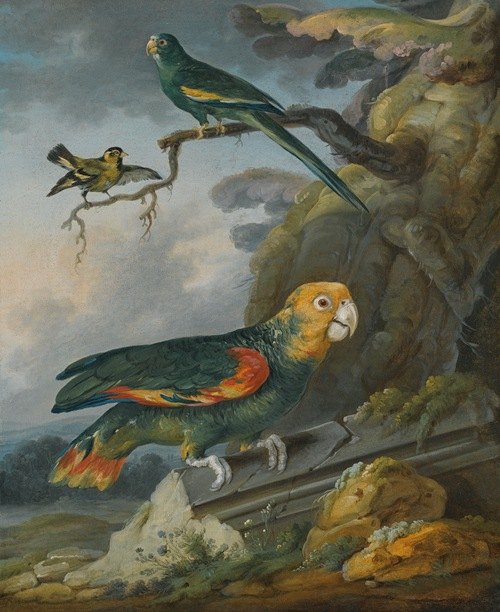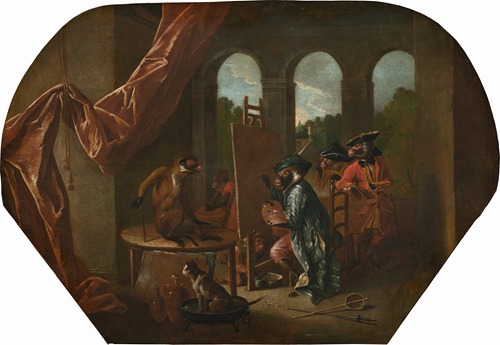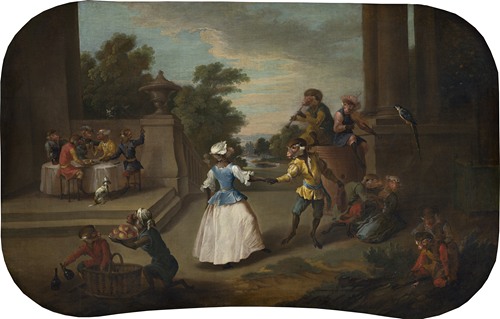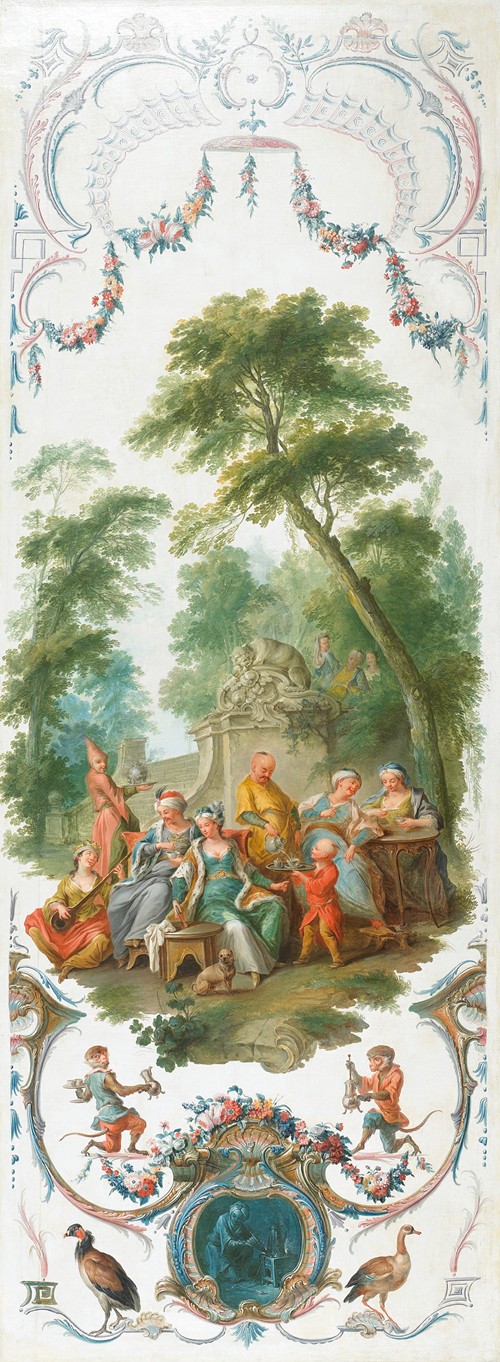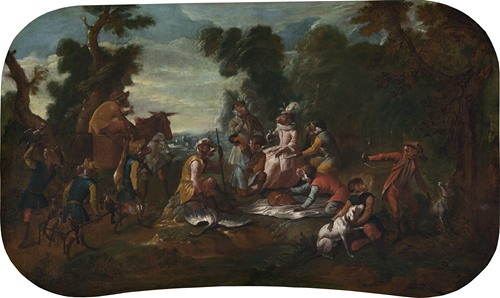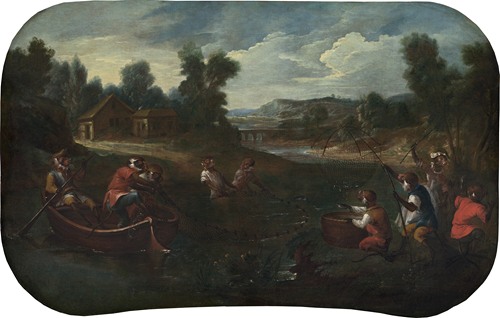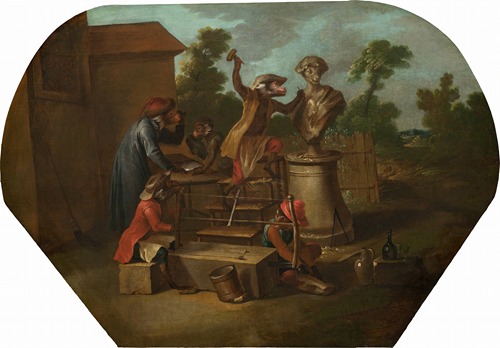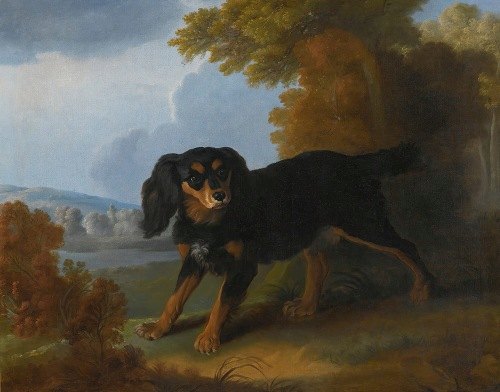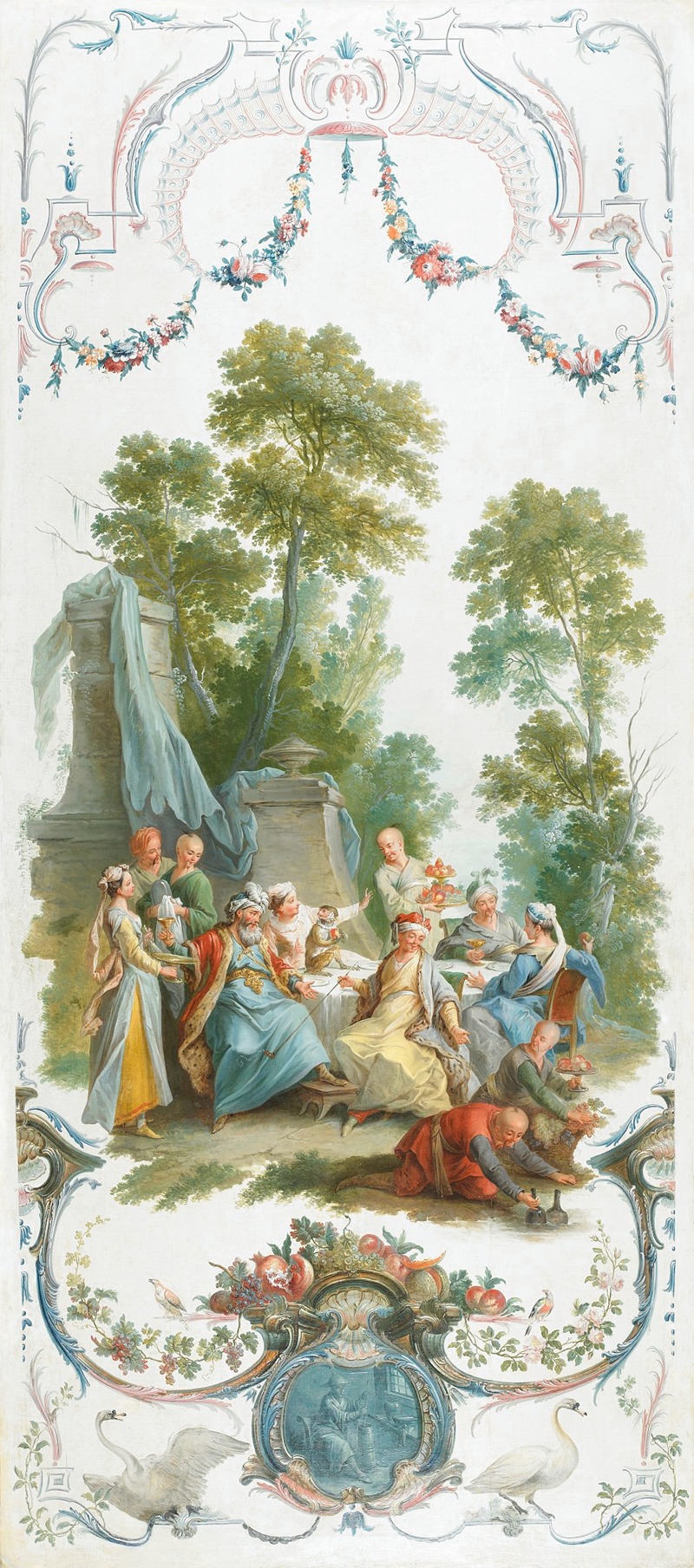
Christophe Huet was a painter appreciated by his 18th-century contemporaries for his animal pictures, but he is now best known for his decorative schemes in the manner of Watteau. His brother Nicolas Huet (1718-after 1788), a pupil of Jean-Baptiste Oudry, specialized in paintings of flowers and fruit. Nicolas's son Jean-Baptiste (Marie) Huet I was an animal painter of some distinction, whose three sons Nicolas Huet II (active 1788-1827), François Huet (1772-1813) and Jean-Baptiste Huet II (b. 1772) were painters and engravers.
In 1734 Christophe was admitted to the Académie de Saint-Luc; he later exhibited in the first Salons that this Académie mounted, in 1751, 1752 and 1756, showing animal paintings. In his own lifetime he was known chiefly as an animal painter, but few works by him in this genre have been identified, probably because they have been confused with those of his nephew Jean-Baptiste Huet. However, his Dog Pointing at Partridges (1740; Musée des Beaux-Arts, Nantes) shows the influence of François Desportes.
Huet's reputation now rests entirely on the attractive interiors that he designed for various houses in and around Paris. He was responsible for the décor of a salon in the château of Champs (Seine-et-Marne), which he painted for Mme de Pompadour, and the 'Cabinet des Singes' at the Hôtel de Rohan, Paris. In 1733 he worked with Claude Audran III on the décor of the château of Anet for the Duchesse du Maine (a gilded salon, destroyed). Huet is also credited with two rooms decorated with painted singeries in the château of Chantilly, which Edmond de Goncourt attributed to Antoine Watteau. In all these décors Huet featured conventional Chinese characters busily engaged in very Occidental pastimes and accompanied by monkeys imitating men. These witty scenes, painted in an alert style, without constraint and with great elegance, put Huet in the ranks of the best ornamental painters of the first half of the 18th century.
